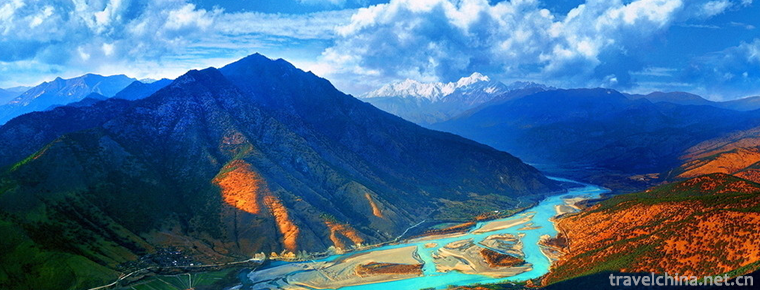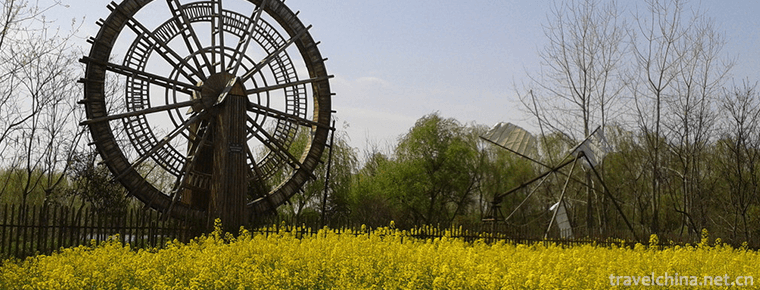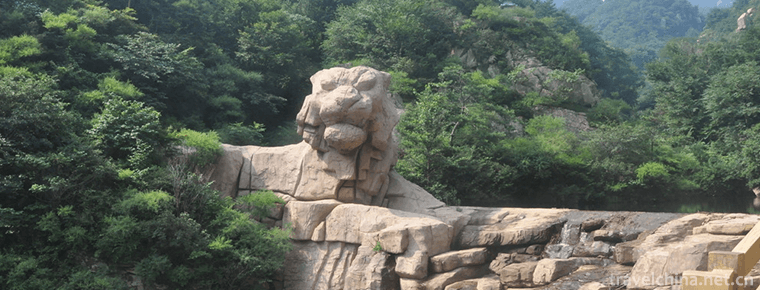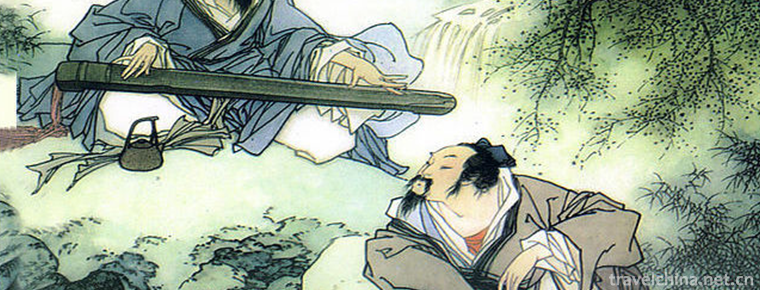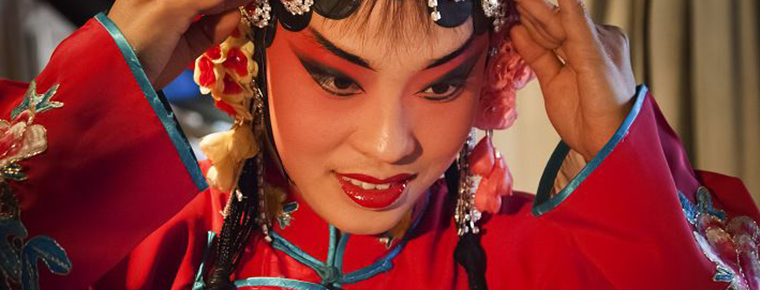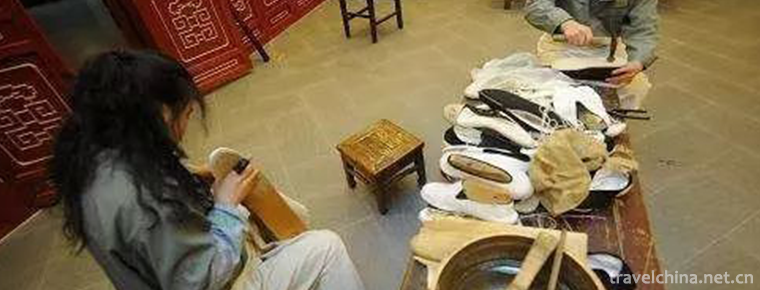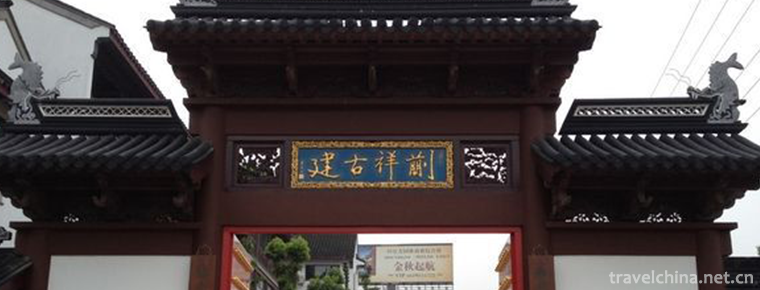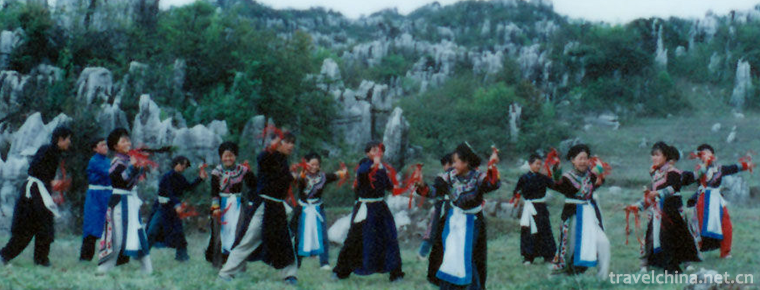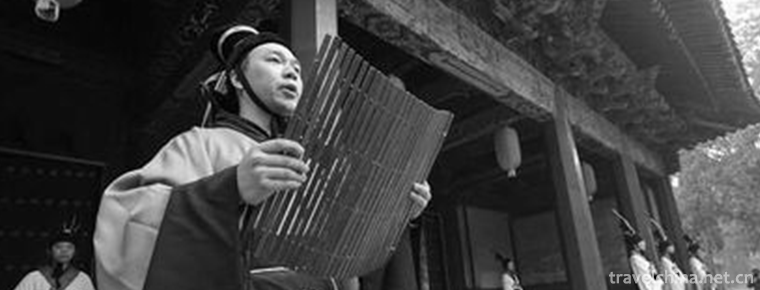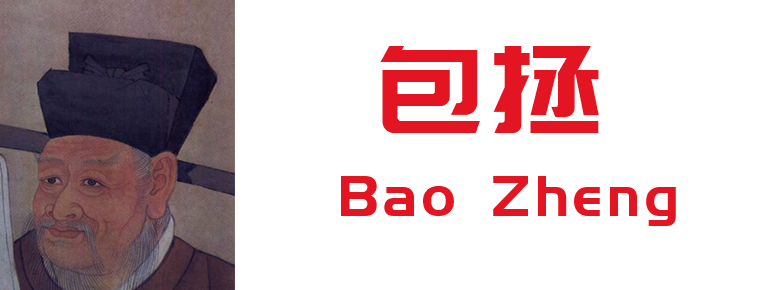Yang Liu Qingmu New Year Print
Yang Liu Qingmu New Year Print
Yangliuqing Wood Printing New Year Picture, Tianjin folk traditional art, one of the national intangible cultural heritage.
According to legend, Yangliuqing woodcut New Year pictures began in Wanli period of Ming Dynasty and flourished in the middle of Qing Dynasty. Yangliu Qingmu New Year Print has a wide range of themes, rich content, full composition, auspicious implication, elegant and popular appreciation. It uses the combination of carving and painting, exquisite carving, delicate drawing, vivid characters, elegant color.
On May 20, 2006, the Yangliuqing woodcut New Year pictures were approved by the State Council of the People's Republic of China and listed in the first batch of national intangible cultural heritage list.
historical origin
According to legend, the Yangliuqing woodcut New Year pictures started in Wanli period of Ming Dynasty. The painting shops are Dai Lianzeng and Qi Jianlong. They may all be painters at first, and they are named after the shop by their names. The history of Dai Lian Zeng Painting Shop can be traced back to Chongzhen period of Ming Dynasty. Later, Dai and Qi systems were divided into many painting shops, the important ones were "Lian Zeng, Beauty, Lian Zeng Li; Jianlong, Huilong, Jianhuilong".
Yangliuqing wood engraving production flourished in the mid-Qing Dynasty and developed into Yangliuqing Town as the center. It also includes 32 villages in Nanxiang (Yangliuqing, Zhoujiazhuang, Lijiazhuang, Zhaojiazhuang, Gufo Temple, fried rice shop, wood factory, Feng Gaozhuang, Guojiazhuang, Daduzhuang, Xiaoduzhuang, Xuanjiayuan, Bijiacun, Xiaodianzi Village, Gongjiazhuang, etc.). Yanjiazhuang, Kangzhuang, Fangjiazhuang, Dongxiliucheng Village, Laojuntang, Yuejiakai, Wangjiacun, Dashawo, Xiaoshawo, Xinkou Village and Zhengjiazhuang) all print New Year pictures.
At the end of the Qing Dynasty and the beginning of the Republic of China, the countryside was depressed, the stone-print New Year's Painting was rising, and the production of Yangliu Youth Painting was declining day by day, but there were still sixteen or seven painting shops (such as Dai Lian Zengjin Ji, Wanshengheng, Wanshengchang, Dai Lianzeng, Lian Zengdai Ji, Yishun, Dai Mei, Qinghe, Yuwan, etc.).
After the broad invasion of the Japanese military, Yangliuqing Youth Painting was greatly damaged in production and sales. Painting shops closed down one after another. Some of them were reluctantly maintained mainly by inscription code, and were on the verge of extinction of artists before liberation.
During the War of Resistance Against Japan, owing to the war, some precious ancient editions of Yangliuqing were damaged countless, and Yangliuqing woodcut New Year pictures were on the verge of extinction.
In 1953, Tianjin Cultural Bureau organized the old artists to set up the "Yang Liu Youth Painting Production Mutual Assistance Group" and resumed the production of New Year's Painting.
In 1958, with the approval of the Tianjin Municipal People's Government, Tianjin Yangliuqing Painting Shop was established (which was formed by Tianjin Deyu Gong Painting House, Tianjin Rongbaozhai and Yangliuqing Youth Painting Workshop, and later renamed Tianjin Yangliuqing Painting Society) to carry out special protection and excavation of Yangliuqing New Year Printing.
Cultural characteristics
Yangliuqing woodcut New Year's Painting is a Folk Woodcut New Year's Painting in China. It inherits the traditions of Song and Yuan Dynasty, absorbs the forms of woodcut, arts and crafts, theatre stage in Ming Dynasty, and combines woodcut overprinting with hand-painted painting to create a distinctive style with vivid, joyful and auspicious and touching themes.
Yangliuqing wood engraving New Year pictures are rich in content. By the end of 2010, there are more than 2000 kinds of pictures preserved in Yangliuqing wood engraving New Year pictures. Among them, there are people who praise (in historical stories) the rule of the world, loyal ministers, saints and virtuous gentlemen, honest officials and good generals. They also criticize the evil acts of comatose lords losing their country, treacherous ministers playing power, evil officials embezzlement, etc. They also publicize the thought of retribution for cause and effect in mythological stories, such as showing good mothers and godsons, filial daughters, heroic rescue, chivalrous and guests. Face to face, there are vivid depictions of various secular figures, such as Lin Quan Gaoshi, patriotic and benevolent people, good teachers and scholars, Yuanzi Yuweng, farmer and Weaver girl, medical divination astrology, monks and Taoists, masters of qin, chess, calligraphy and painting, there are descriptions of famous mountain scenery, current events, news and other subjects, outlining the wheel of the secular folk customs of the Chinese nation for nearly a thousand years. The outline is like a complete picture of folk life. Yangliuqing woodcut New Year pictures have various themes, including historical stories, opera characters, gods of wealth, beauty, fat dolls, pavilions, animals, flowers, Bogu and ten kinds of brocades, auspicious rich and noble patterns, which imply festivity and auspiciousness.
Yangliuqingmu New Year's prints are rich in composition, neat in brushwork and bright in colour. Most of the important parts of the figure's head, face and clothing are dyed with powder and golden halo. They have a unique style. They are greatly influenced by traditional paintings and Northern engraving illustrations. In terms of plate making, there are two kinds: Spring Edition and autumn edition. The Spring Edition is fine and the Autumn Edition is rough. Carving is characterized by the combination of woodblock overprinting and hand-painted, unique style, popular with the masses.
Production process
The production process of Yangliuqing wood engraving New Year pictures is roughly as follows: manuscript creation, plate division, engraving, overprint, color painting, mounting. Pre-process is similar to other woodcut New Year pictures, which are based on the overprint of the draft. However, the post-production of Yangliuqing Wood New Year pictures spends a lot of process in hand-painted, which integrates the flavor of the woodcut with the tone of the brush strokes of the painting and makes the two arts complement each other skillfully.
When making Yangliuqing New Year's Wood Print, the picture lines are first carved with woodcut, then printed on it with ink. After two monochrome plates, the picture is filled with colored pens. There are not only plate flavor, wood flavor, but also hand-painted colorful and craftsmanship. Therefore, folk art has strong charm and rich Chinese style.
Subject works
Tianjin Yangliu Qingmu New Year Print has a wide range of subjects, involving politics, economy, military, religion, philosophy, geography, sociology, folklore, literature, art and many other fields. The materials are very extensive, such as historical stories, myths and legends, opera characters, secular customs and landscape flowers and birds, especially those closely related to people's lives.
For example, Busy Crops, Festival of Lantern Festival, Late Festival of the Qiujiang River, Visiting Old Knowledge with One South Village, Happy New Year, Happy Family, Fisherwoman, Women's Studying, Civilized Marriage and Pawnshop Grabbing, etc.
Inheritance and Protection
Inheritance value
Yangliuqing Wood Printing New Year Picture has created a distinctive style with vivid, happy and auspicious, touching theme. In the history of Chinese printmaking, Yangliu Youth Painting and the famous Southern Taohuawu New Year Painting in Suzhou are called "South Peach and North Willow".
Yangliuqingmu New Year Print is the representative of Chinese New Year Picture Art, which occupies an important position in the development history of Chinese folk culture and Tianjin culture. The excavation, rescue and protection of Yangliuqing wood engraving New Year pictures are of great significance to the study of Tianjin folk culture, northern New Year pictures and even the development of Chinese art.
Heritage figures
Huo Qingshun, male, was born in November 1952. In June 2007, Huo Qingshun was selected as the representative successor of the first batch of national intangible cultural heritage projects and declared by Tianjin. Project Name: Yangliuqing Wood Engraving New Year Picture.
Huo Qingyou, male, was born in 1954. In June 2007, Huo Qingyou was selected as the representative successor of the first batch of national intangible cultural heritage projects and declared by Tianjin. Project Name: Yangliuqing Wood Engraving New Year Picture.
Feng Qingzhong, male, was born in June 1944. In June 2007, Feng Qingquan was selected as the representative successor of the first batch of national intangible cultural heritage projects and declared by Tianjin. Project Name: Yangliuqing Wood Engraving New Year Picture.
Wang Wenda, male, was born in December 1944. In June 2007, Wang Wenda was selected as the representative successor of the first batch of national intangible cultural heritage projects and declared in Tianjin. Project Name: Yangliuqing Wood Engraving New Year Picture.
protective measures
Tianjin Yangliuqingmu New Year Print Museum is one of the 20 popular projects in Tianjin. The project was completed on July 14, 2011. Its main purpose is to protect, save and develop Tianjin Yangliuqingmu New Year Print.
social influence
Important activities
On September 2, 2017, China Tourism Industry Exposition was held in Meijiang International Convention and Exhibition Center. In Xiqing Tourism Products Promotion Exhibition Area, a teacher demonstrated the production process of Yangliuqing Wood Print New Year Picture.
On June 10, 2017, on the first "Cultural and Natural Heritage Day" in China, Huo Qingshun, the successor of Yangliuqing wood block New Year Painting, showed the audience the production process of Yangliuqing wood block New Year Painting.
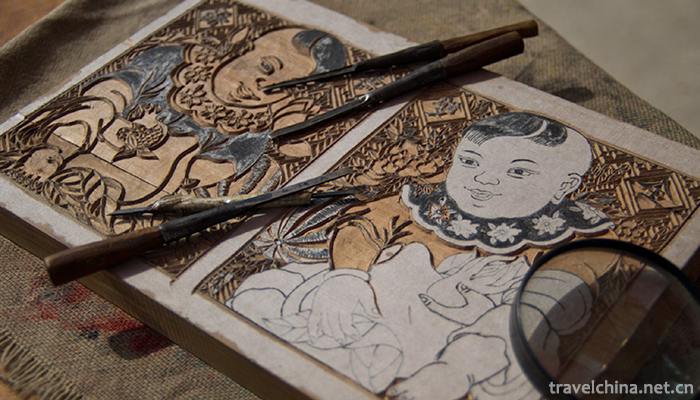
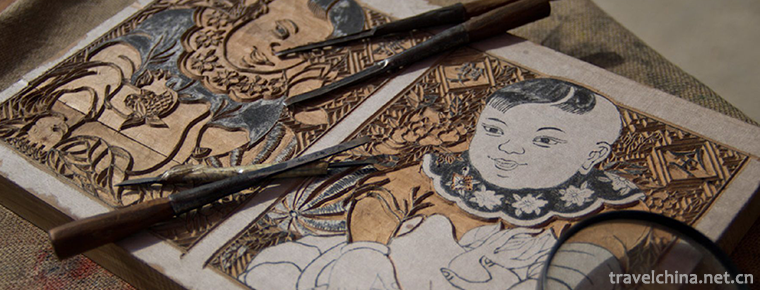
Yang Liu Qingmu New Year Print
-
Three Parallel Rivers of Yunnan Protected Areas
The three rivers running side by side are Jinsha River, Lancang River and Nujiang River, three rivers originating from the Qinghai-Tibet Plateau, running 170 kilometers from north to south in Yunnan P
Views: 93 Time 2018-12-19 -
Qinhu National Wetland Park
Qinhu National Wetland Park is located between the central part of Jiangsu Province and the Yangtze and Huaihe River. The total area of the scenic spot is 26 square kilometers.
Views: 166 Time 2019-02-07 -
Lion Mountain Scenic Area
Lion Mountain Scenic Area is located in the east of Shaoshan Scenic Area, which is divided into Lion Mountain Scenic Area and Benbenling Scenic Area.
Views: 395 Time 2019-02-08 -
Legend of Boya Period
"When the evidence of the legendary place of Bo Yazi Period was found in Hanyang, I knew that it was hopeful to apply for the national level!" Yesterday, the reporter learned from the Provin
Views: 229 Time 2019-04-04 -
Jin Opera
Jin Opera is Shanxi Bangzi, an important drama in northern China, also known as Zhonglu Opera, Chinese traditional opera. It was named after Fenyang, Xiaoyi, Qixian, Taigu and Taiyuan, which sprang up
Views: 218 Time 2019-05-07 -
Manufacturing Skills of Inside Lined 1000 Layer Cloth Shoes
Inline Shoe Shoe Shoe Shoe Shoe Shoe Shop was founded in 1853 in Xianfeng, Qing Dynasty. At first, it was specially designed for the royal family and officials at all levels t
Views: 314 Time 2019-06-07 -
Construction Techniques of Traditional Architecture of Xiangshan Band
Xiangshan Gang's traditional architectural construction techniques, local traditional handicraft techniques in Suzhou City, Jiangsu Province, one of the national intangible cultural heritage.
Views: 159 Time 2019-07-03 -
Ring Dance of Yi Nationality
Ling Dance of the Yi Nationality, to be known as foot-jumping, is called "Qi He Zhe" in the Yi language, which means the spiritual farewell dance. It is a traditional folk dance performed an
Views: 147 Time 2019-07-12 -
Recitative
Recitation is a local traditional music form in Changzhou City, Jiangsu Province, which has a high reputation at home and abroad. The art of reciting belongs to "minority culture", which is
Views: 105 Time 2019-07-13 -
Bao Zheng Bao Qing Tian
Bao Zheng (999 - July 3, 1062), He Xi Ren. Luzhou Hefei (now) Anhui Hefei Feidong People. Northern Song Dynasty Famous ministers.
Views: 188 Time 2019-09-11 -
Chengdu Weiran flower sea
Weiran flower sea is the largest flower sightseeing base in Chengdu, the top 50 rural tourism base in Chengdu, the most beautiful flower appreciation base in Chengdu, Chengdu music industry base, top
Views: 150 Time 2020-04-10 -
Geographical environment of Deyang
Deyang City is located in the northeast edge of Chengdu Plain, with geographical coordinates of 30 ° 31 ′ - 31 ° 42 ′ N and 103 ° 45 ′ - 105 ° 15 ′ E. Deyang borders Fucheng District of Mianyang City in the northeast, Santai County of Mianyang City in the East
Views: 321 Time 2020-12-14
